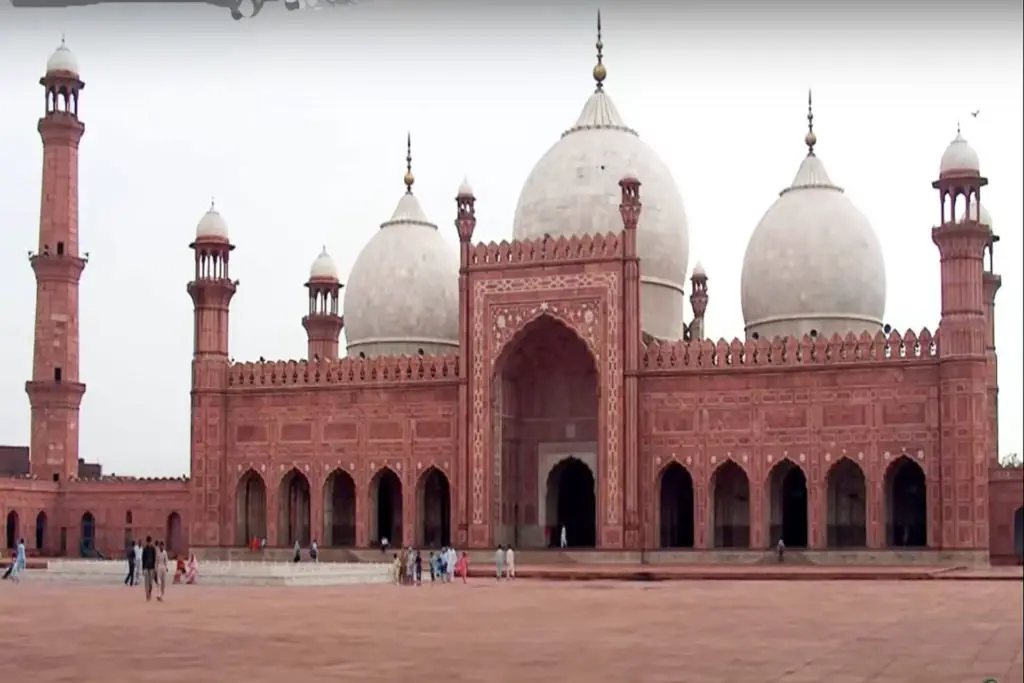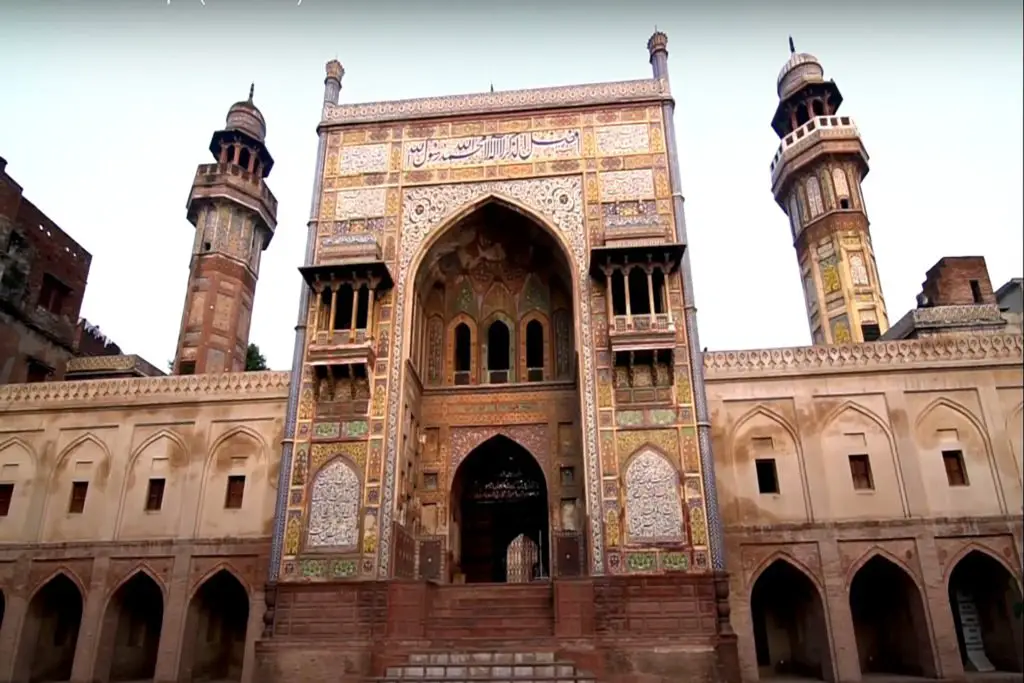Badshahi mosque Lahore also known as ‘the Royal Mosque’, is a Mughal-era Masjid in Lahore, the capital of the Pakistani province of Punjab, Pakistan. The mosque is located west of Lahore Fort on the outskirts of Walled City and is widely regarded as one of Lahore’s most iconic landmarks.
Who Built Badshahi Mosque
The Badshahi Mosque Lahore was built by the Mughal emperor Aurangzeb between 1671 and 1673 and was the largest mosque in the world from 1673 to 1986. It remains the largest mosque in the Mughal period and is the third largest mosque in Pakistan. After the fall of the Mughal Empire, the mosque was used as a fortress by the British Empire, and it is now one of the most beautiful places in Pakistan.
Badshahi Masjid Lahore Location
The mosque is located in the walled city of Lahore, Pakistan. The entrance to the mosque is located east of Hazuri Bagh and faces the famous Alamgiri Gate of Lahore Fort, east of Hazuri Bagh. Badshahi Mosque Lahore is also located near the Roshnai Gate, one of the first thirteen gates in Lahore, located on the southern side of Hazuri Bagh.
Near the entrance to the mosque is the Tomb of Allama Muhammad Iqbal, a highly regarded poet in Pakistan as the founder of the Pakistan Movement that led to the formation of Pakistan as a Muslim country of British India located near the entrance to the mosque.
Badshahi Mosque Lahore (1084 AH / 1673-74 AD) is one of the most impressive offerings of the Aurangzeb period. In appearance, it resembles the Jamia mosque of Shah Jahanabad and Fatehpur Sikri in terms of basic design ideas and the use of materials. The main two-story entrance faces east and the entrance approaches 22 steps forming a three-dimensional pyramid.
The central Pishtaq and open ports on both sides have a pair of arched niches placed directly on top of each other. The entire brick-and-mortar building is lined with red sandstone lined with white marble. The façade is divided into rectangular panels carved with low freedom. A pair of square shafts is attached to the sides of the slightly protruding harbor and runs across the roof with white marble domelets.
The four existing minarets of Badshahi Mosque Lahore are cut off in a spacious design area occupied by square kiosks. The white marble tablet above the Pishtaq has the following inscription (with the exception of Kalima Tayyaba): “The mosque of Abu Zafar Mohiuddin Muhammad Alamgir, King of Gazi, was completed under the direction of the humble house servant, Fidai Khan Koka, in 1084 AH.
History of Badshahi Mosque Lahore
The sixth Mughal emperor, Aurangzeb, chose Lahore as the site of his new state mosque. Aurangzeb, unlike previous emperors, was not a major supporter of art and architecture and instead focused, during much of his reign, on various military victories that added more than 3 million square miles [3 million sq km] to the Mughal region.
Badshahi Masjid Lahore was built to commemorate Aurangzeb’s military campaigns in southern India, especially against Maratha King Shivaji. As a symbol of the importance of the mosque, it was built directly across the Lahore Tower and its Alamgiri Gate, which was built at the same time by Aurangzeb during the construction of the mosque.
Pictures Gallery
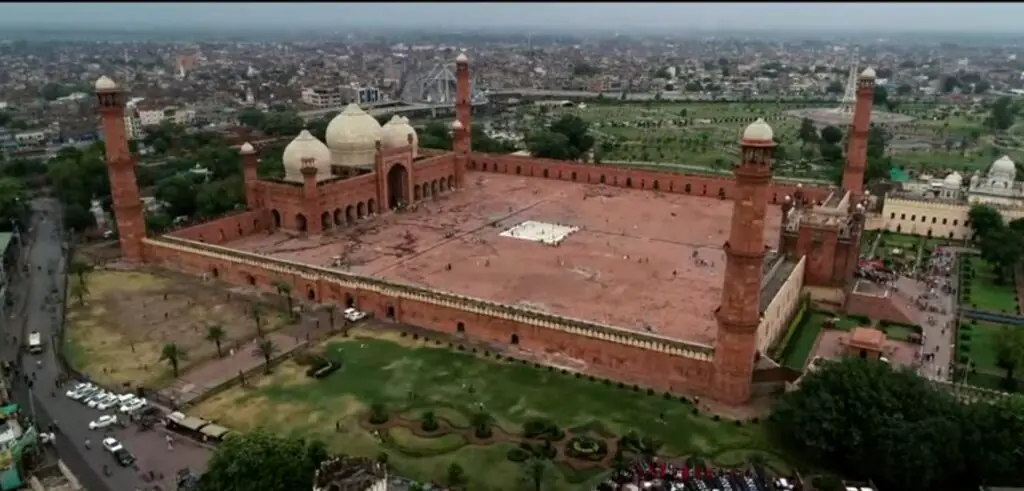
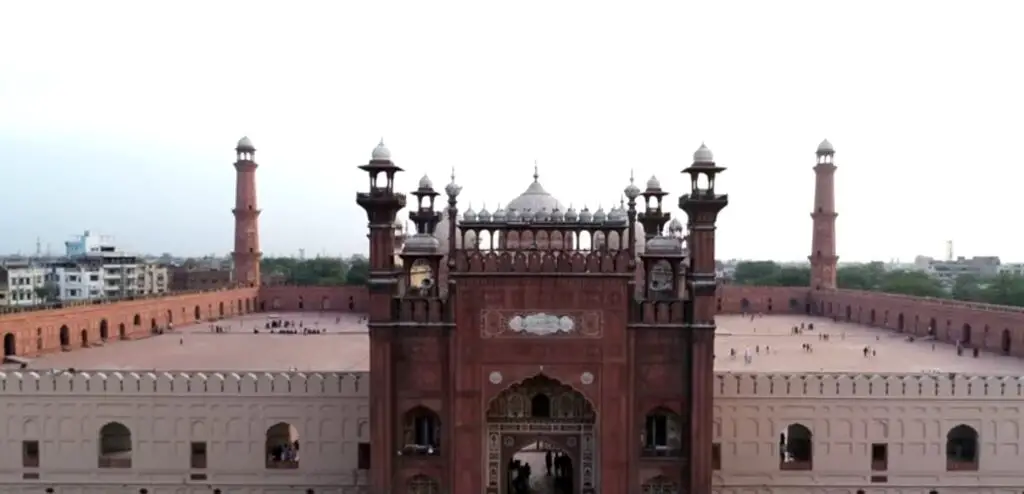
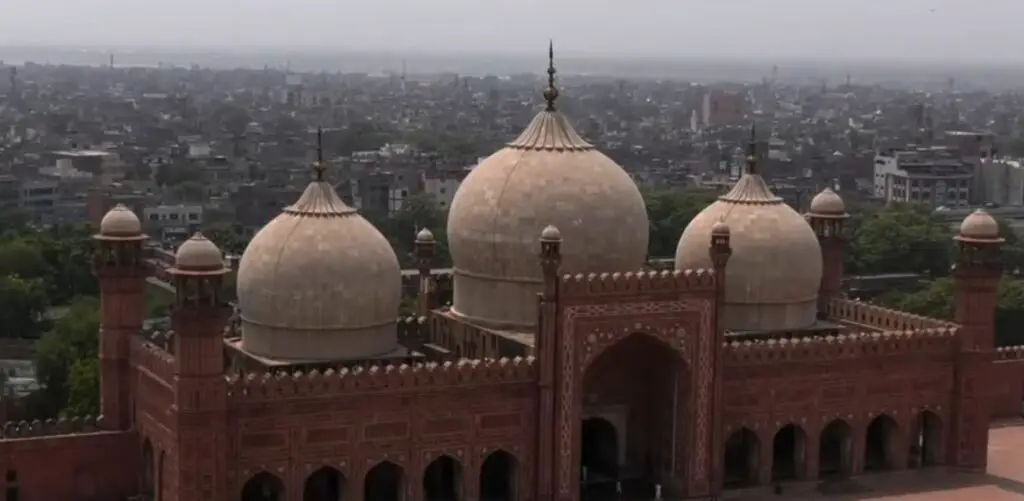
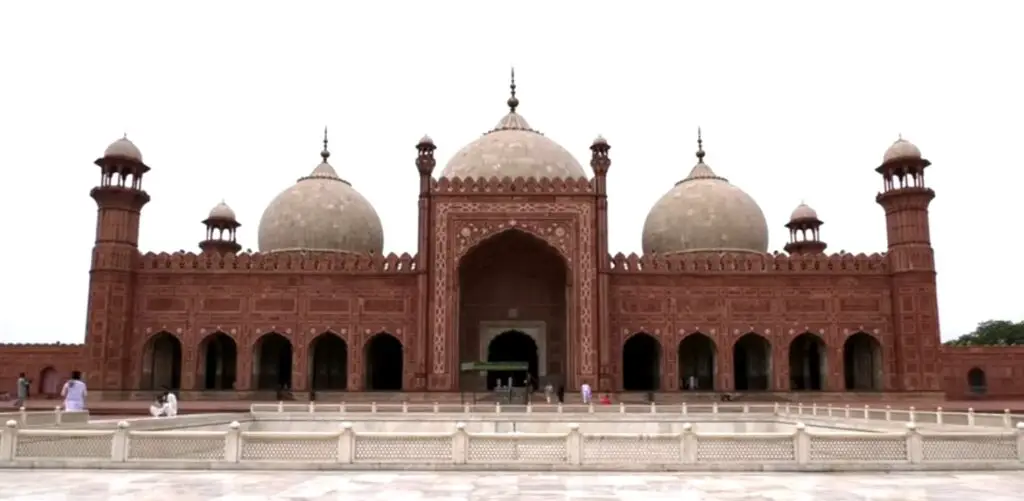
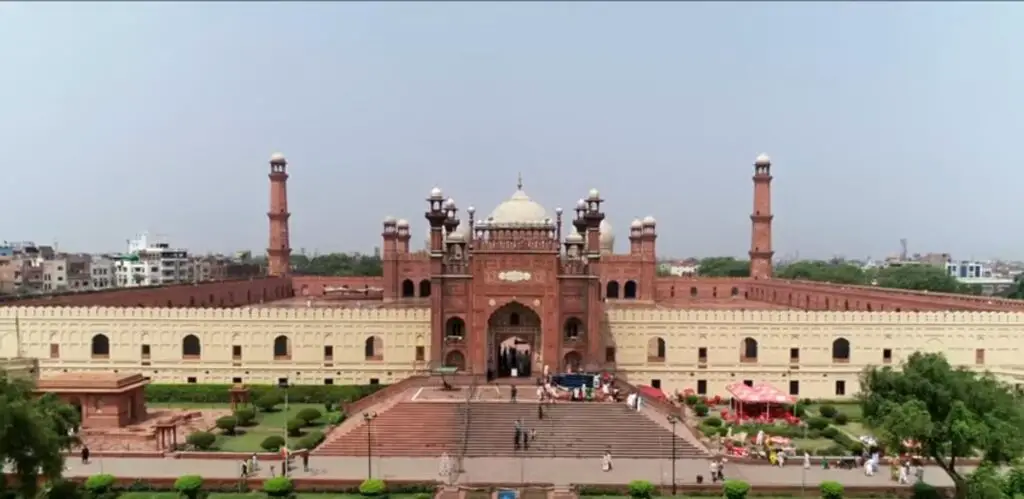
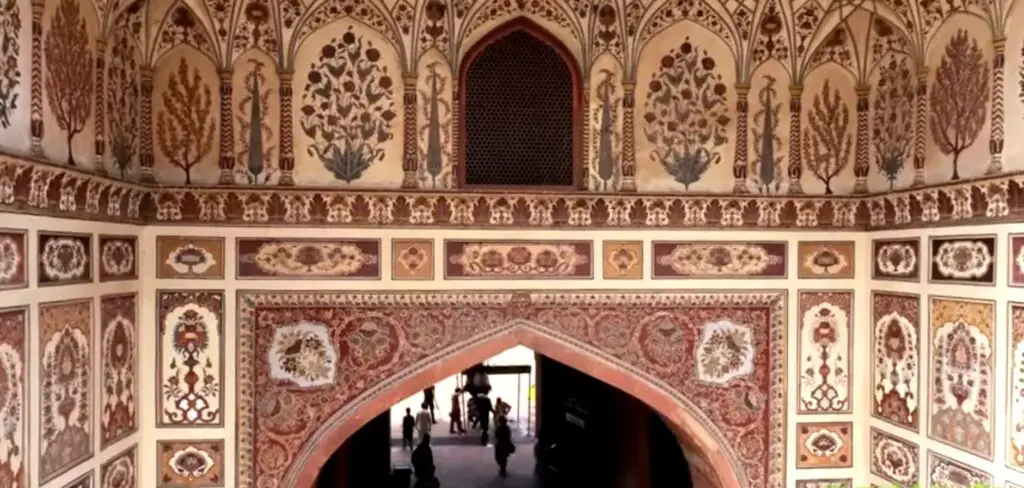
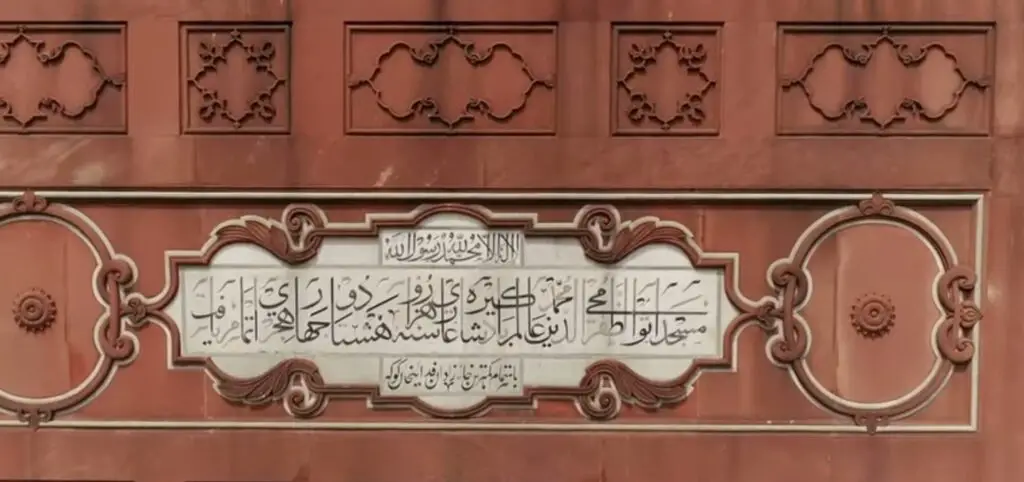
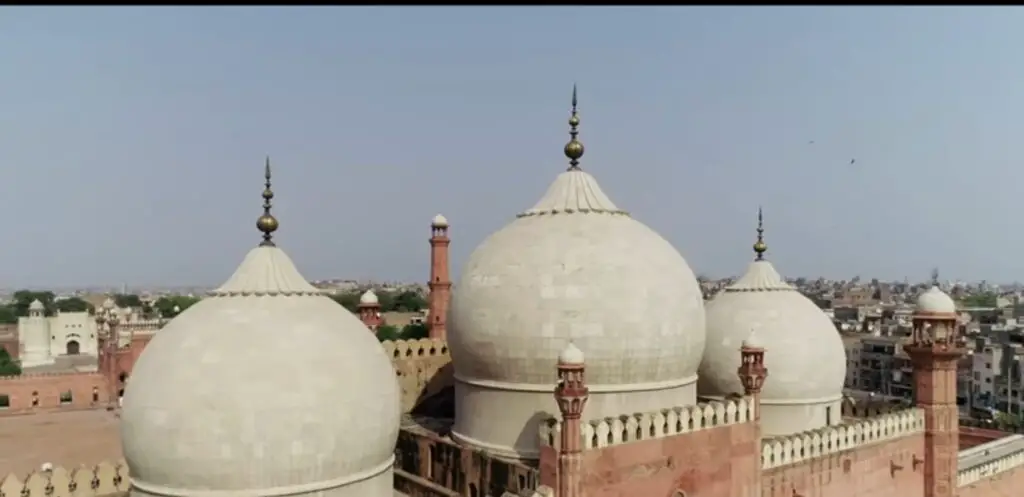
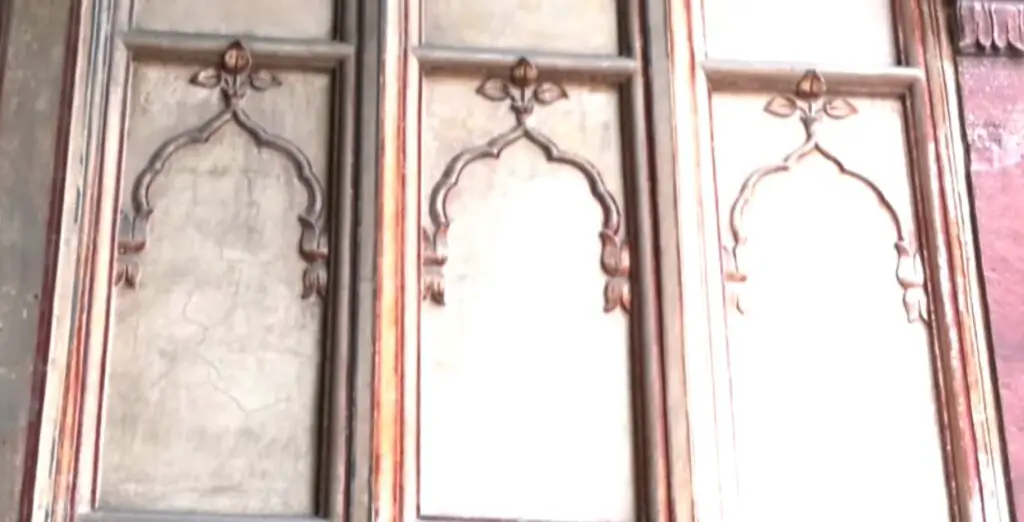
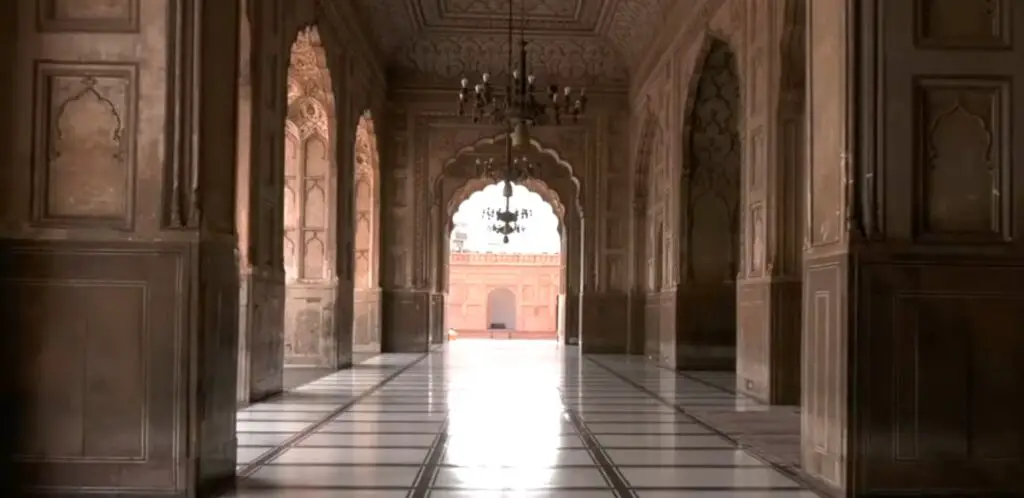
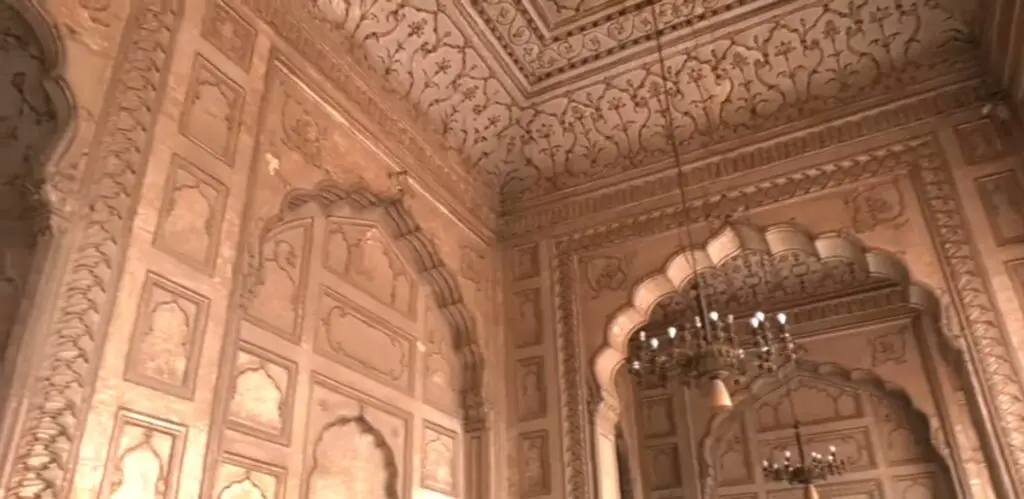
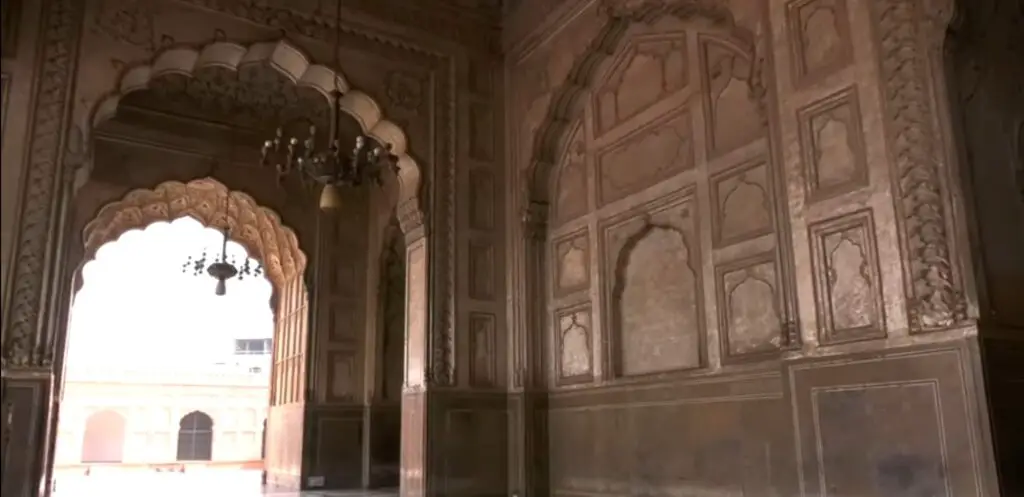
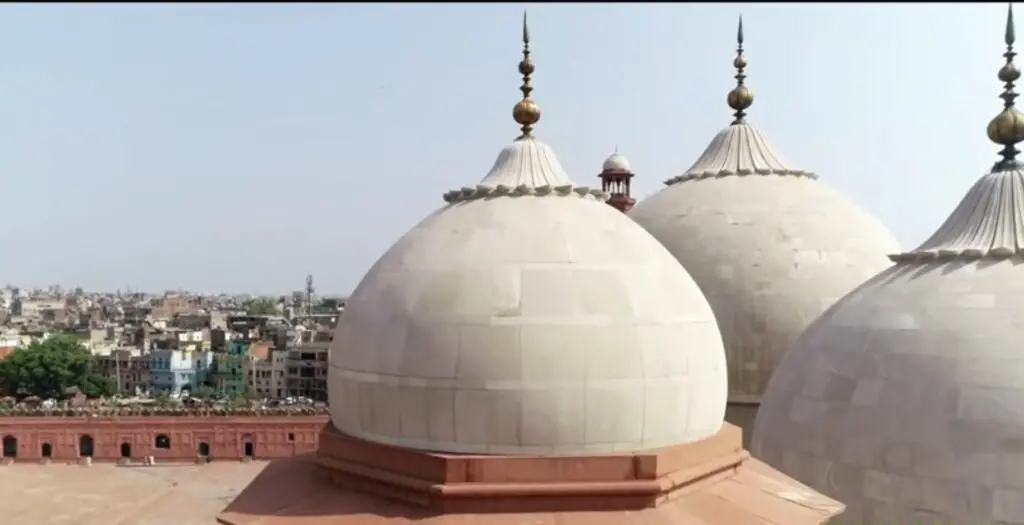
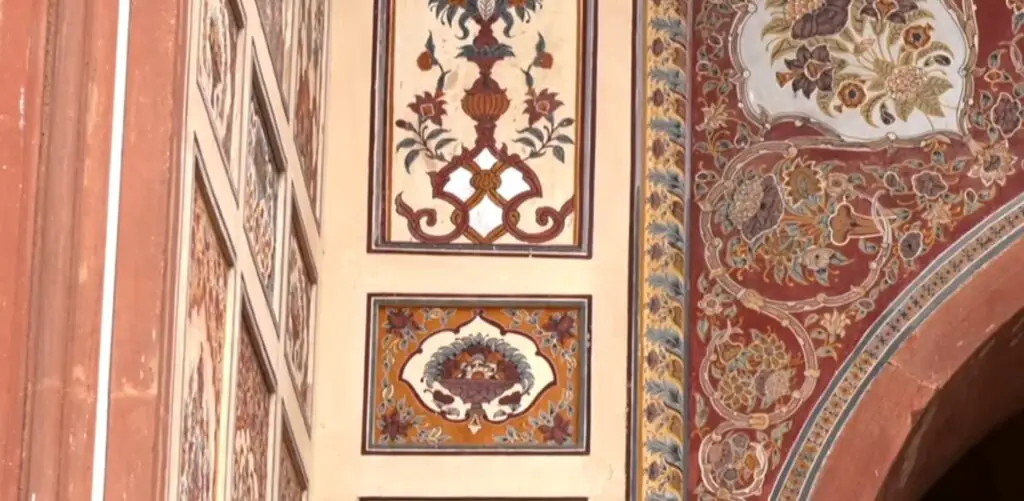
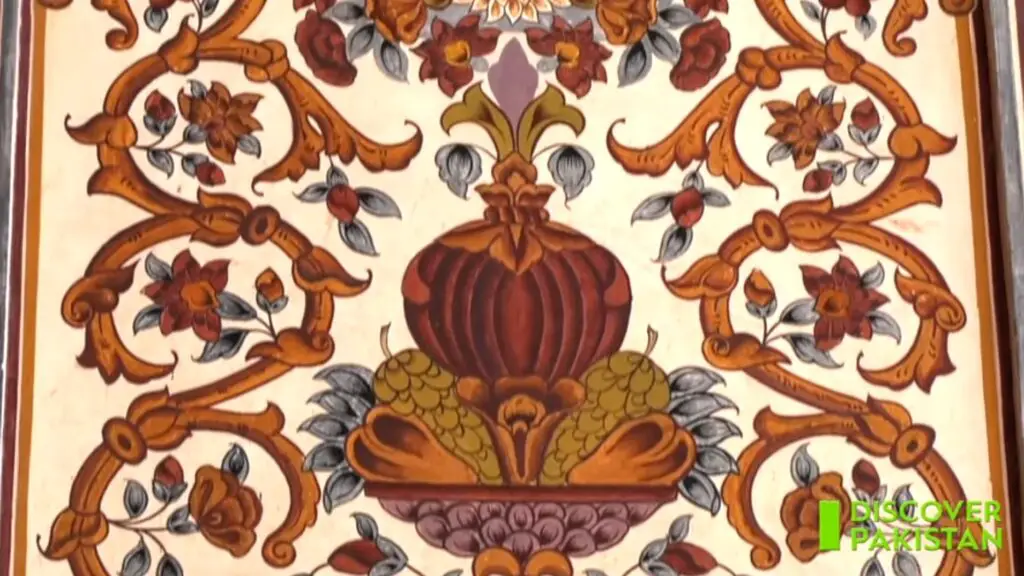
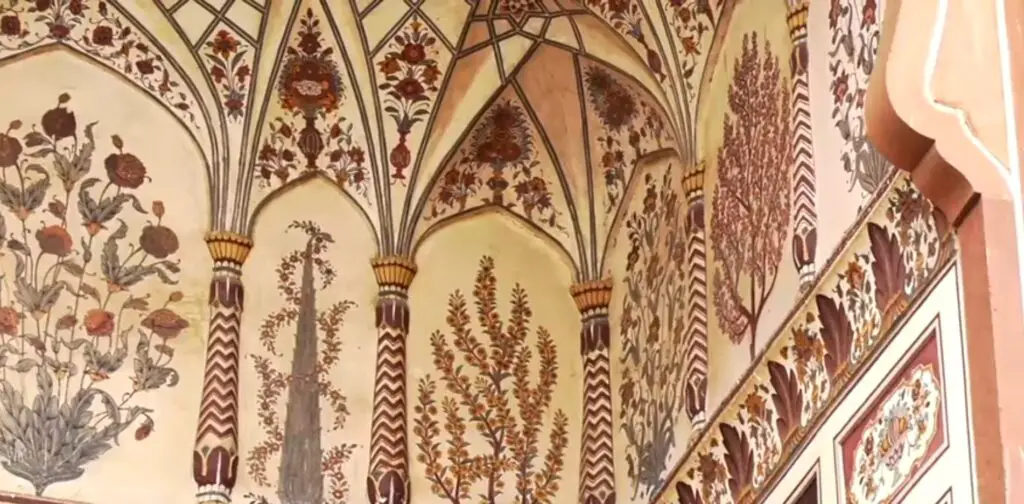
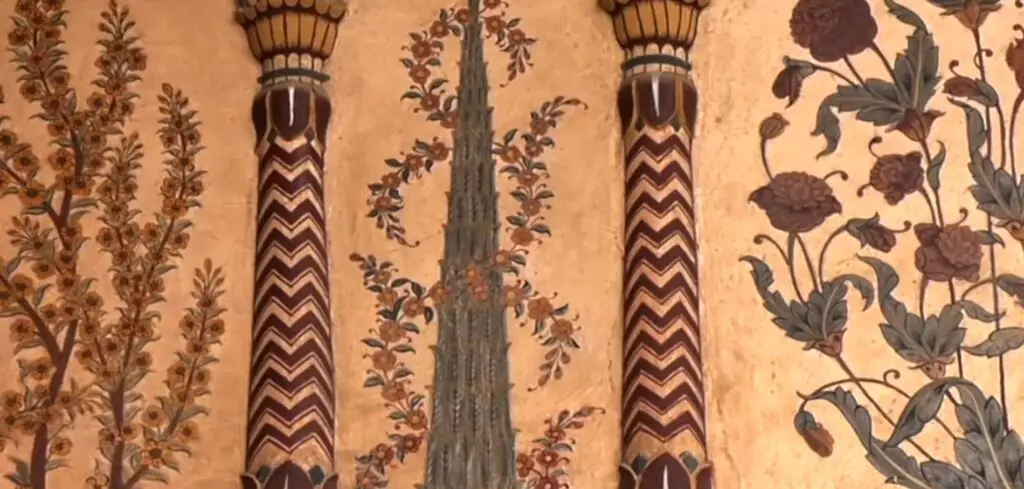
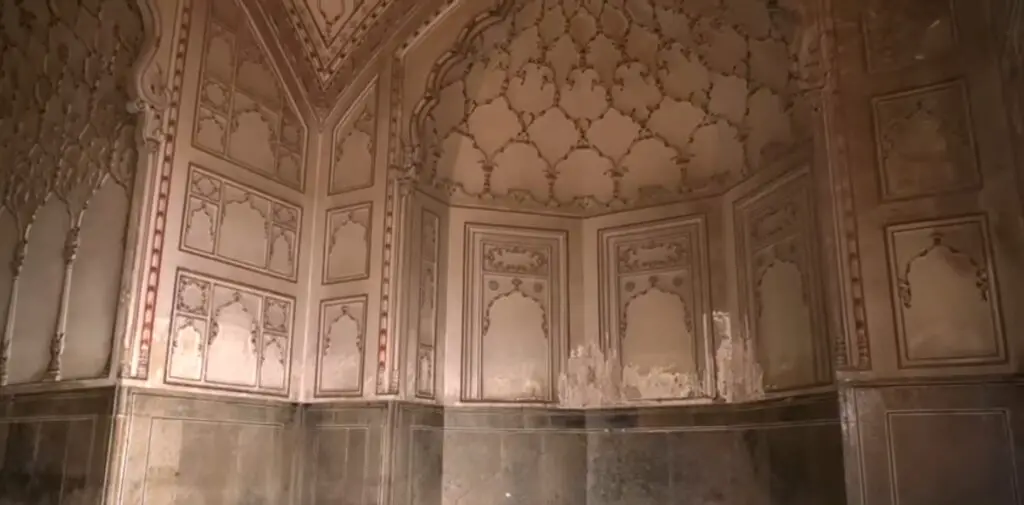
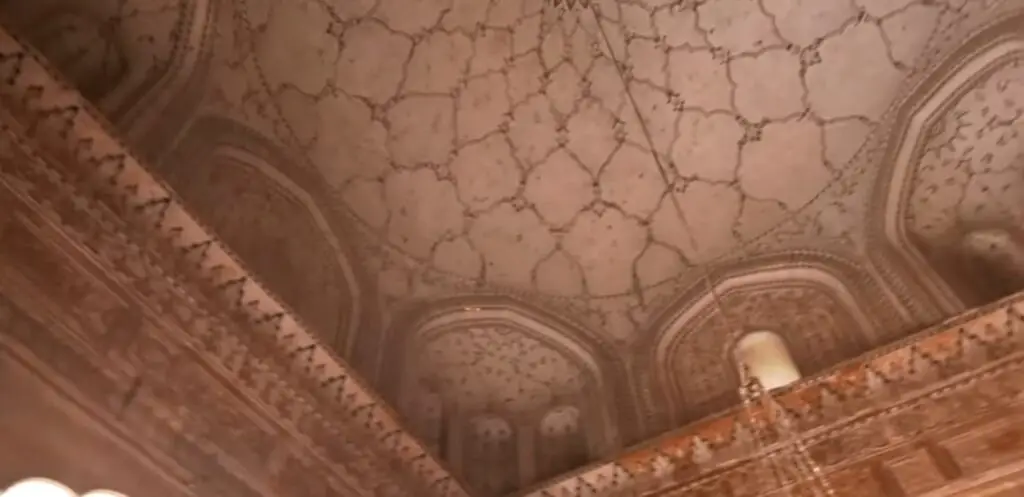
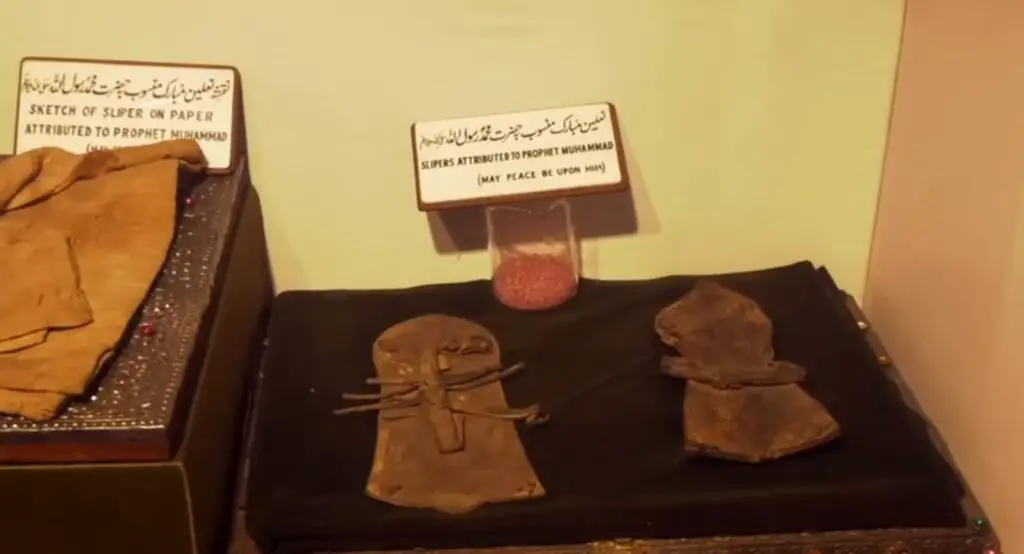
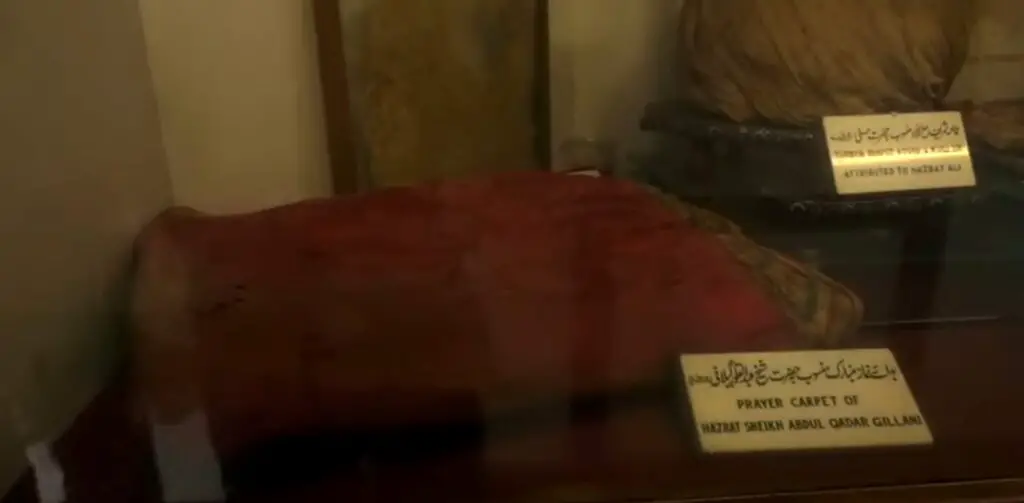
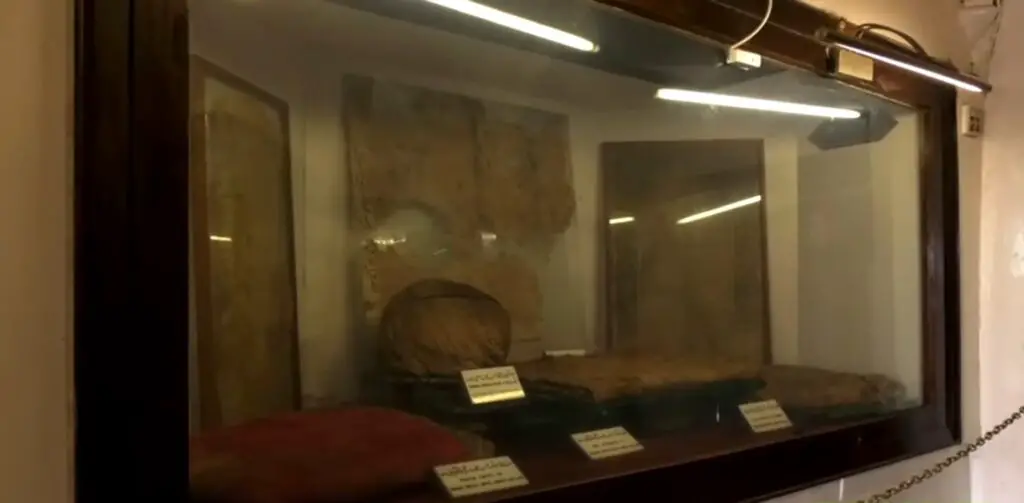
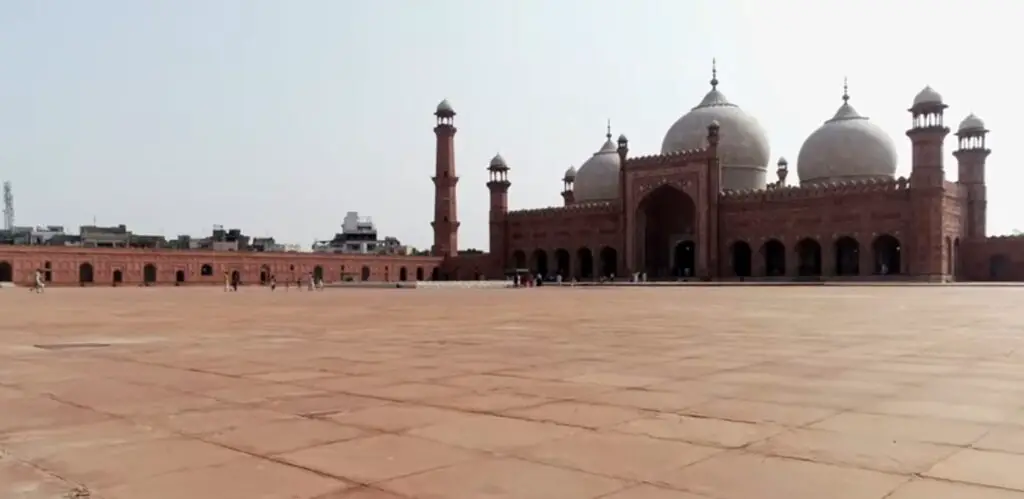
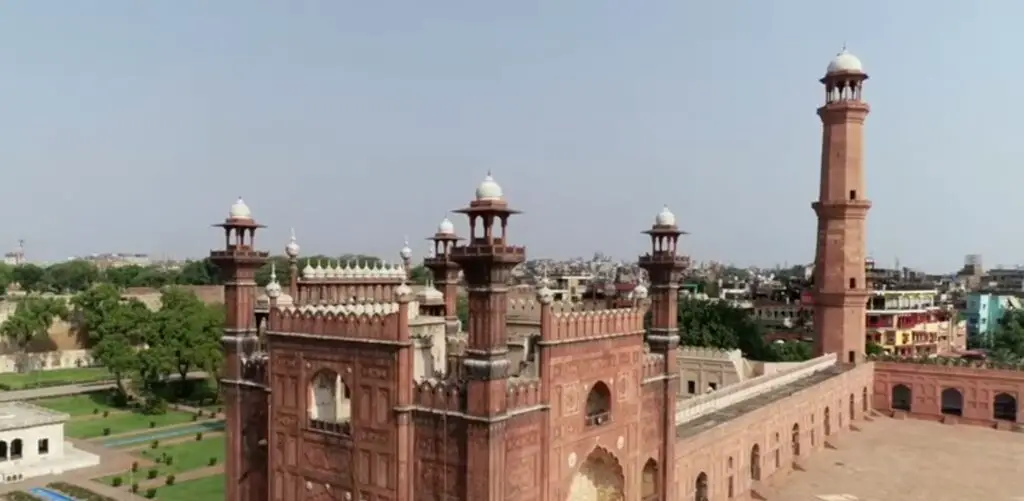
Mughal Architecture of Badshahi Masjid
Badshahi Mosque Lahore was commissioned by the Mughal Emperor Aurangzeb in 1671, under the supervision of the Emperor’s brother, and the Governor of Lahore, Muzaffar Hussein – better known as Fidai Khan Koka. Aurangzeb built a mosque to commemorate his military campaigns against Maratha King Shivaji. After only two years of construction, the mosque opened in 1673.
Badshahi Mosque during Sikh Rule
On July 7, 1799, Ranjit Singh‘s Sikh army occupied Lahore. After the conquest of the city, Ranjit Singh used its large courtyard as his army’s stable, as well as its 80 Hujra (small study rooms around the courtyard) as the residence of his soldiers and the magazines of military stores.
In 1818, he erected a marble structure at Hazuri Bagh opposite the mosque, known as Hazuri Bagh Baradari, which he used as his official royal court. Baradari marble may have been plundered by Sikhs at some monuments in Lahore.
During the First Anglo-Sikh War in 1841, Ranjit Singh’s son Sher Singh used large mosque tunnels to house the Zamburah or light guns used to bomb Chand Kaur’s followers, who had taken refuge in the besieged Lahore Fortress. In one of the bombings, the castle of Diwan-e-Aam (Public Spectator Hall) was demolished, but it was rebuilt during the British occupation.
During this time, Henri de La Rouche, a French army officer employed by Sher Singh’s army, also used a tunnel connecting the Badshahi mosque and the Lahore castle to temporarily store the guns.
In 1848, the Samadhi of Ranjit Singh was built by Sikh governor Ranjit Singh in an area near the Badshahi Masjid after his death.
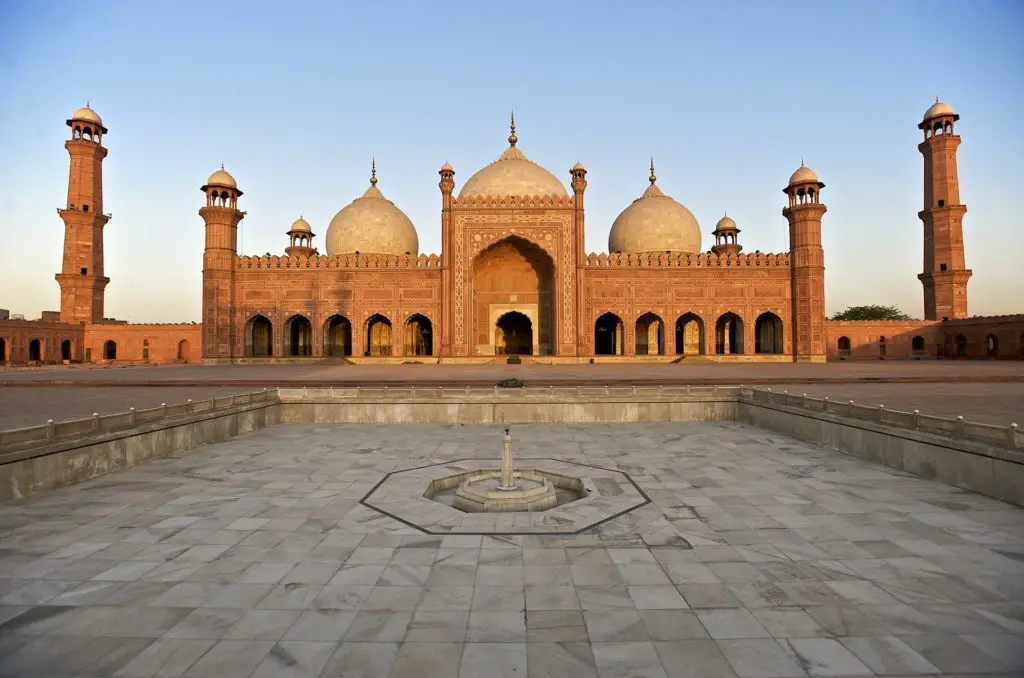
Badshahi Mosque in British Rule
In 1849 the British took control of Lahore in the Sikh Empire. During the British Raj period, Badshahi Mosque Lahore and its surrounding fortress continued to be used as a military base. 80 cells built into the walls around its main courtyard were demolished by the British after the Indian uprising in 1857, to prevent them from being used for anti-British activities. Cells have been replaced by open arcades, known as dalans.
Due to the growing Muslim outrage against the use of the mosque as a military force, the British established the Badshahi Mosque Authority in 1852 to oversee the restoration and re-establishment as a place of religious worship. From then on, minor adjustments were made under the direction of the Badshahi Mosque Lahore Authority. The building was officially restored to the Muslim community by John Lawrence, former Indian Deputy Vice President The building was then re-established as a mosque.
In April 1919, following the Amritsar Massacre, a mixed crowd of 25,000-35,000 Sikhs, Hindus, and Muslims gathered in the Badshahi Masjid. Gandhi’s speech was read aloud at the ceremony by Khalifa Shuja-ud-Din, later speaker of the Punjab Provincial Council.
Extensive reforms began from 1939 onwards when Sikandar Hayat Khan began raising funds for this purpose. Repairs were under the supervision of builder Nawab Alam Yar Jung Bahadur. Since Khan was highly regarded for the extensive restoration of the mosque, he was buried near the mosque in Hazuri Bagh.
Post Independence Era
Restoration projects began in 1939 and continued after the Independence of Pakistan, and were completed in 1960 with a total value of 4.8 million Rupees.
During the 2nd Islamic Conference in Lahore on February 22, 1974, thirty-nine heads of Islamic regions offered their Friday prayers at the Badshahi Masjid, which included, among others, Zulfiqar Ali Bhutto of Pakistan, Faisal of Saudi Arabia, Muammar Gaddafi. , Yasser Arafat, and Sabah III Al-Salim Al-Sabah of Kuwait. The prayers were led by Mawlānā Abdul Qadir Azad, then a mosque.
In 1993, the Badshahi Mosque Lahore was shortlisted as a UNESCO World Heritage site. In 2000, a marble block was set up in the prayer hall. In 2008, work to replace the red sandstone tiles in the main courtyard of the mosque began with the use of red sandstone, which came from an original Mughal source near Jaipur, in the Indian state of Rajasthan.
As a gate to the west, and to Persia in particular, Lahore had a strong regional style strongly influenced by Persian architectural styles. Previous mosques, such as the Wazir Khan Mosque, were adorned with intricate kashi kari, or Kashan-style works, from which the Badshahi Mosque Lahore descended.
Aurangzeb has chosen an architectural plan similar to that of Shah Jehan’s chosen Jama Masjid in Delhi, although it is building a Badshahi Masjid on a much larger scale. Both mosques feature a red sandstone with white marble inlay, derived from the construction of a typical mosque in Lahore, where the decoration is done with intricate tile work.
From the gate, one enters the courtyard 530 meters on all sides. It has eighty cloisters on all sides. The yard has two sections. The lower part contains a bath tank. A few years ago, the floor of the mosque was laid with small bricks, a Musalla pattern was made but is now being replaced by red sandstone. The prayer room is located on the upper level in the middle of the western edge of the courtyard.
The front facade consists of a high Pishtaq in the center with five arches on both sides lined up on the common roof of the prayer hall. The main arch of the pishtad is made of marble inlay while the arch spandrel has a colorful arabesque. There are rectangular panels above the small arches decorated with embedded work. The solidity of the red sandstone is softened by the work of the marble inlay.
The corners of the prayer room are marked with four small minarets with imaginative circles surrounded by ruling kiosks. The parapet is made up of a horizontal line of merlons. The main area of the prayer hall is surrounded by side spaces. The interior of the prayer room is surrounded by three dams with double letters of white marble and placed on cylindrical drums. The middle dome is higher than the two on both sides.
The entrance to the Badshahi Mosque Lahore is started by a two-story building made of red sandstone decorated with framed wooden planks on each of its front porches. The building features muqarnas, an architectural feature from the Middle East that was first introduced to Mughal architecture by the magnificent Wazir Khan Mosque.
The full name of the mosque, “Masjid Abul Zafar Muhy-ud-Din Mohammad Alamgir Badshah Ghazi”, is inscribed with marble adorned above the door. A large entrance gate and a mosque are placed over the base, which rises in a 22-step flight at the main entrance to the mosque. The gate itself contains several rooms that are inaccessible to the public. One of these rooms is said to have the hair of Prophet Muhammad (Peace be Upon Him), as well as that of his son-in-law Ali (a.s.).
After passing through a large gate, a paved courtyard is spread over an area of 276,000 square feet [276,000 sq m], and it can seat 100,000 worshipers while serving as Idgah. The courtyard is lined with arcades in one location.
The main building in the area is also made of red sandstone and is decorated with white marble inlay. The prayer room has a central area with five arched niche sides that are approximately one-third of the central niche. The mosque has three marble houses, the largest of which is located in the center of the mosque, and is surrounded by two smaller houses.
Both the interior and the exterior of the mosque are adorned with white marble carved with floral designs typical of Mughal art. Sculptures in the Badshahi mosque are considered to be one of the most unique and incomparable works of Mughal architecture. The rooms on each side of the main hall had rooms that were used for religious instruction. The mosque can accommodate 10,000 worshipers in a prayer hall.
In the four corners of the Badshahi Mosque Lahore, there are three-story mountain peaks made of 60 feet [60 m] of red sandstone, 67 feet [67 m] outside, and an eight-foot [8.5 m] inner circle. Each minaret is topped with a marble canopy. The main mosque building also has four small minarets in each corner of the building.

